13 ways to prevent flystrike: The signs to look out for and treatment
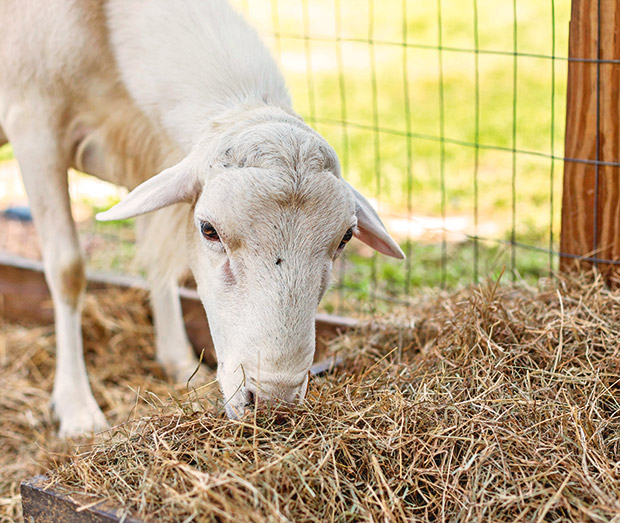
Flystrike is easy to prevent, but vets still see it far too often.
Words & photos: Dr Sarah Clews, BVSc
Flystrike is a nasty condition commonly seen in sheep and alpaca, but it can affect any animal, including rabbits, poultry, cats, and dogs. It’s simply, grossly, an infestation of maggots.
The most common culprits are blowfly species, which lay eggs on the warm flesh of the animal. Maggots hatch and feast on the flesh, quickly causing large, deep wounds, extreme pain, infections, and in the worst cases, death.
It’s primarily seen during warm, humid weather when flies are attracted by the scent of hot, damp animals. Hot weather can also significantly speed up the flies’ lifecycle, which means an animal can be seriously affected in just a few days.
In the South Island, the peak risk season is November to April; in the more humid North Island, it’s from October to May. It’s difficult to spot an animal with flystrike from a distance, which is why it’s important to check stock up close, daily.
Signs include:
• stamping of feet;
• nibbling at their bodies (due to irritation);
• grinding of teeth (a pain behaviour);
• lethargy, lying down more than usual, often away from others in the flock/herd;
• flies buzzing around the animal
• dark pigmented wool (or wool falling out) due to skin damage by the maggots.
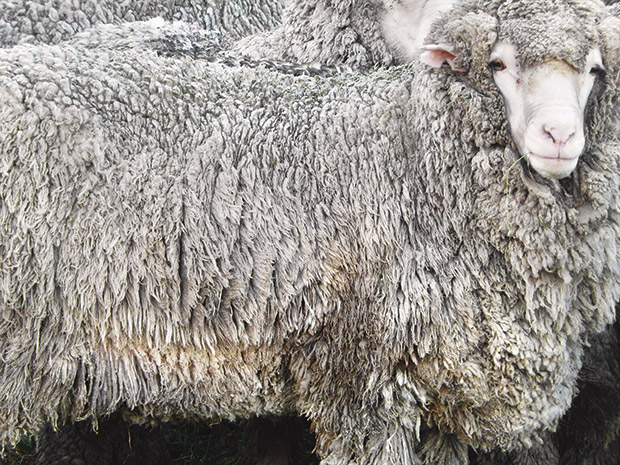
Lamb with dark pigmented wool.
Flystrike is horrendous and debilitating to an animal. It’s easily preventable, but vets still see it a lot. Some animals don’t receive the appropriate preventative care. We also see flystrike even though stock were supposedly treated. These are some of the reasons why.
1. SHEARING
This is the most critical thing you can do to avoid flystrike. Shearing is usually done:
• in June to help prevent winter lice;
• at the start of summer, to prevent flystrike.
Shearing helps to keep sheep clean, cool, dry, and dag-free.
2. PREVENT DIARRHOEA
Flies are attracted to moist, smelly areas on animals, and pooey backsides are the perfect target. If you can prevent diarrhoea, you significantly decrease the risk of flystrike.
It’s essential to design and follow a quality drenching program. If an animal does get diarrhoea, trim off any smelly wool. If diarrhoea doesn’t clear up quickly after drenching, get your vet to rule out other causes.
3. TAIL DOCKING
Docking tails in young lambs prevents diarrhoea from accumulating around an animal’s back end. Docking means applying a ring between the vertebrae, below the level of the vulva, so the tail is still long enough to protect the genitals and sweep away flies.
Tail docking is recognised as a painful procedure. Ideally, it’s done when lambs are 1-2 weeks old. If lambs are over six months old, it must be performed under a vet’s supervision, using appropriate pain relief.
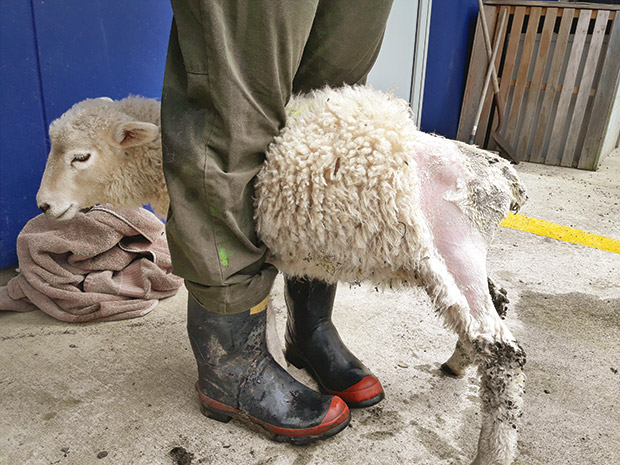
Areas affected by maggots are often much bigger than they seem. Always keep cutting away wool until you create a clean border around an infestation.
However, pain relief is highly recommended for animals of any age. Pain relief options are available through your vet, either an injection (at the clinic) or a liquid you can give to your lambs if you’re docking them at home.
4. CLOSELY MONITOR WOUNDS AND SICK STOCK
Any animal that suffers a wound during the warmer months is at risk of flystrike. Blood, pus, or weepy fluid is the ultimate open bar for a fly. Stock suffering from a disease are often lethargic, which also makes them a prime target. If you have a sick animal, monitor it closely and check its entire body regularly, including the belly, in the ‘armpits’, and the tail region.
5. USE INSECTICIDES
The appropriate use of chemical insecticides is a crucial part of preventing flystrike, but they’re often applied incorrectly. Most people on blocks use products that come with a spray applicator. Carefully follow the instructions, which are usually to apply a dose along the back and rear end – don’t overdo it, as too much can be toxic to the sheep.
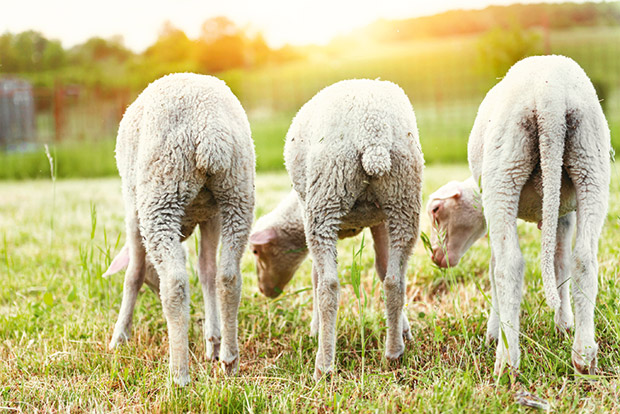
These products work best (for up to 12 weeks) when applied about four weeks after shearing. If you apply a preventative insecticide on the day of shearing, protection may not last very long, depending on the breed, wool type, and wool length. Even if you apply an insecticide, you still need to monitor your stock daily for signs of flystrike.
6. CONTROL THE ENVIRONMENT
Blowflies love heat, but their eggs also need moisture to hatch. You may find there are certain humid ‘hotspots’ on your block, such as sheltered gullies. Windy areas are a safer environment during high-risk weather such as warm, rainy and/or humid summer days.
Make sure you bury dead animals promptly to avoid feeding the fly population. Set out fly traps around your block. They’re not going to control a soaring fly population, but they’re a useful tool to alert you when flies are hatching from the soil, indicating the ideal time to shear and/or use a preventative treatment.
7. CHOOSE THE BEST SHEEP FOR YOUR BLOCK
If you live in a humid region, choose sheep breeds that are less prone to flystrike, such as those with fine wool or self-shedding breeds. However, also remember that during high-risk times, even self-shedding breeds can be struck by flies, so always monitor stock closely, whatever the breed.
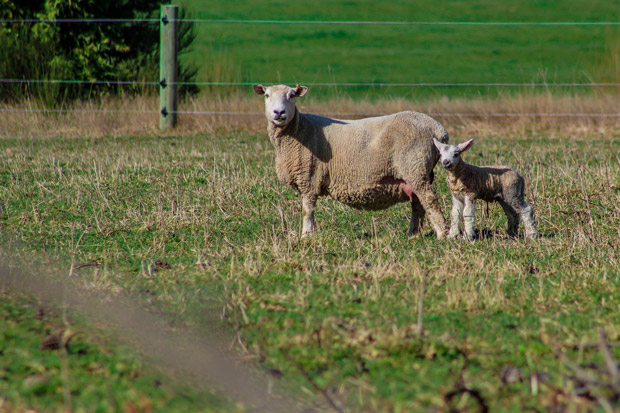
8. KNOW YOUR MOST VULNERABLE ANIMALS
Your most at-risk animals are:
• lambs, at or before weaning;
• animals with shearing wounds;
• unshorn animals;
• animals with dags;
• animals with tails that are too short.
9. ACT FAST
Adult flies lay up to 200 eggs at a time on moist areas of a sheep’s body, close to the skin, and maggots multiply quickly, so always act fast. A sheep can lose weight rapidly, even if the affected area is small (less than 15cm in diameter).

Alpacas are very stoic so it’s more difficult to notice the behavioural changes that you’ll see with sheep. It’s easy to see the darkened, damp patch on a white alpaca, but more difficult on one with dark fibre, so it’s vital to carefully check stock every day.
10. GET THE TAIL RIGHT
Tails should be long enough to cover the vulva in ewe lambs, around 10cm or so (dock males to the same length). This allows animals to wag their tail, which helps disperse faeces and urine away from the body and knock flies away. Research shows animals with undocked tails or tails that are too short (exposing the vulva and anus) are far more prone to flystrike.
11. KNOW WHEN TO MOVE SHEEP
Move sheep to higher ground during danger periods; blowflies don’t like the cooler temperatures and higher wind speeds.
12. AVOID FLY HOSPOTS
Avoid grazing sheep near fly hotspots such as sheltered scrub-lined gullies, patches of thistles, bush margins, and the lee of shelterbelts. Don’t intensively graze pasture, as this concentrates faecal and urine odours, which are very attractive to flies.
13. PLANT HIGH TANNIN CROPS
Crops such as birdsfoot trefoil, lotus, sainfoin, and sulla are very effect. They help to prevent parasite burdens and don’t tend to cause diarrhoea.
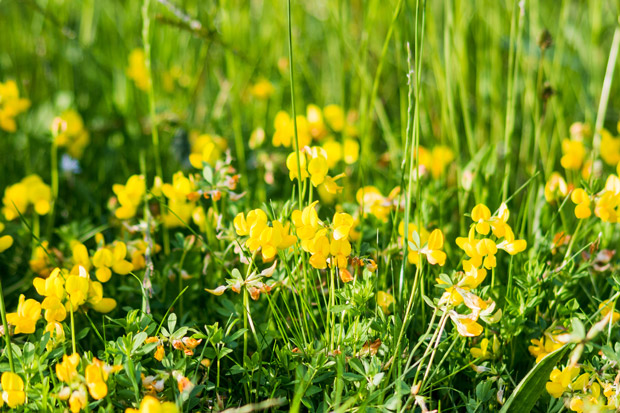
Birdsfoot trefoil.
HOW TO AVOID INSECTICIDE RESISTANCE
Flies are continually developing resistance to the chemicals used in preventative products. To slow down resistance:
• alternate chemical groups (known as ‘families’), especially if you’re applying a preventative product twice in a season;
• when treating an active flystrike case, use a chemical that’s a different family to the one you used to try and prevent it;
• if you use a chemical in winter to prevent lice, make sure it’s a different chemical family to the one you use in summer for flystrike;
• make sure you’re using effective chemicals – check with your vet.
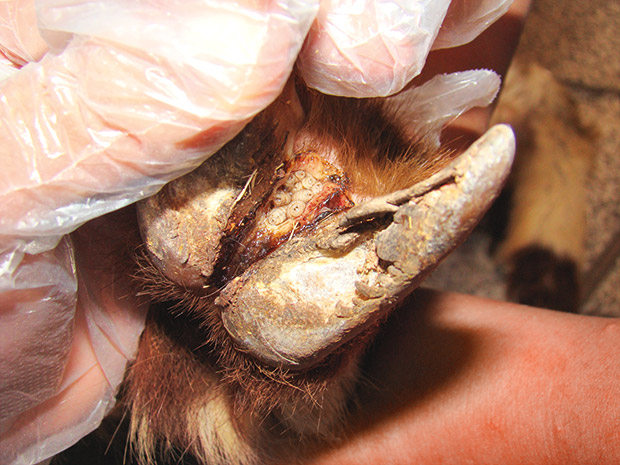
Check between the toes of two-toed livestock as it’s another potential sore spot.
PREVENTION PRODUCTS AREN’T TREATMENTS
Products used to prevent flystrike repel flies. But once an animal becomes infested with maggots, you’ll need a different product to kill them, and prevent the remaining eggs from hatching.
It’s vital to read product labels carefully and get a vet’s advice. The animal will also require antibiotics, pain relief, and possibly further supportive care. Always call a vet for help.
WHY DIY ‘TREATMENTS’ DON’T WORK & ARE INHUMANE
Some people attempt to treat maggot infestations themselves, using alcohol or hydrogen peroxide on a wound. But these products won’t treat infections or kill off a maggot infestation.
One study showed alcohol kills only 42% of maggots and hydrogen peroxide just 33%. Iodine doesn’t work either, only killing 37%. Alcohol and hydrogen peroxide may sterilise the wound from surface bacteria but won’t treat deep infections. These products are ineffective and don’t meet animal welfare standards.
WHAT TO DO WITH A FLY-STRUCK ANIMAL
Search all over the animal’s body – maggot infestations can be hard to find, especially on stock with long wool or fibre. Check between the toes too.
Shear or trim the wool away around the wound until you’re past its edges as they’re often larger than they first seem. There may also be multiple wounds.
Flush the wound copiously with clean water and manually remove maggots. Spray the wound with iodine to clean it.
Contact your vet to get pain relief, antibiotics, and an appropriate product to kill any remaining maggots and prevent further eggs from hatching.
Love this story? Subscribe now!
 This article first appeared in NZ Lifestyle Block Magazine.
This article first appeared in NZ Lifestyle Block Magazine.
